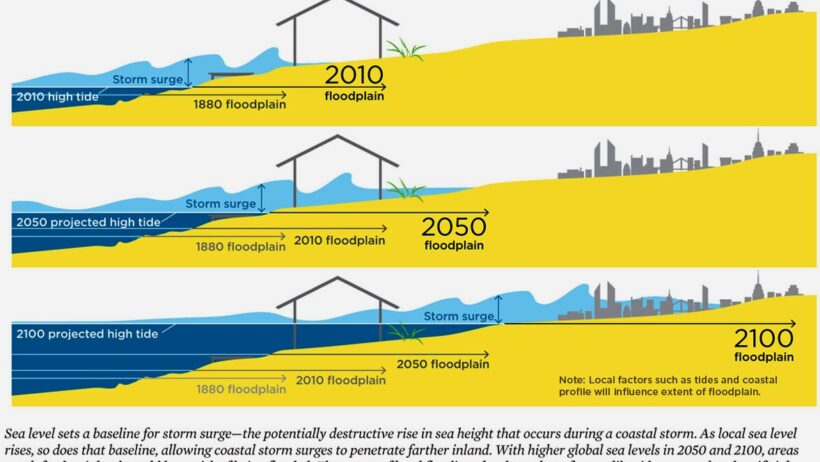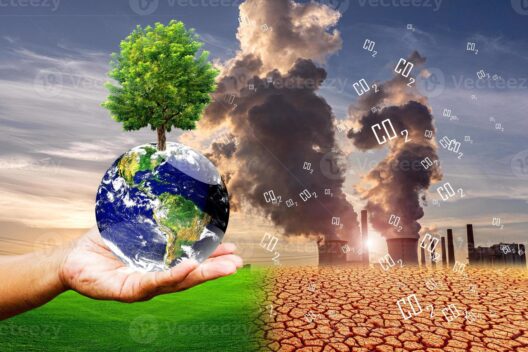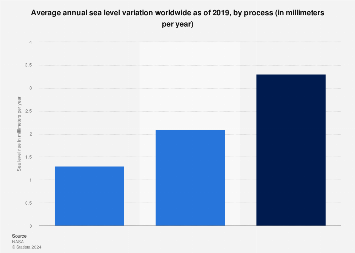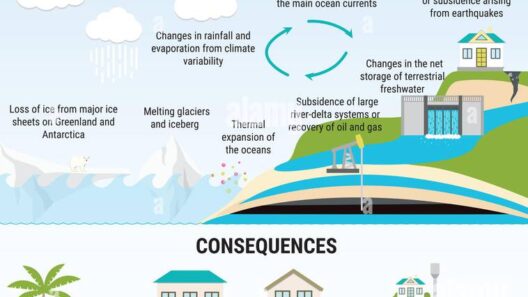Rising sea levels, a quintessential consequence of climate change, are not mere numbers on a chart; they represent a clarion call to the fragility of marine ecosystems. As global temperatures ascend, polar ice sheets and glaciers disintegrate, unlocking the vast reservoirs of freshwater trapped in their icy confines. This phenomenon poses a multitude of ramifications for marine life. Understanding the cascade of impacts on marine ecosystems is essential for awareness and mitigating efforts.
Fortunately, our oceans are not devoid of resilience. However, the increasing pace and scale of sea-level rise exacerbate existing vulnerabilities, leading to profound transformations in marine habitats. This article delves into how rising sea levels affect marine life, exploring the intricate web of ecological interactions that underline the health of our oceans.
Impact on Coastal Habitats: The Foundation of Marine Biodiversity
Coastal habitats, such as mangroves, salt marshes, and seagrass beds, serve as vital nursery grounds for numerous marine species. These ecosystems not only provide shelter and breeding grounds but also filter pollutants and act as carbon sinks. However, as rising sea levels inundate these areas, the balance of these cherished habitats is disrupted.
In many regions, saltwater intrusion becomes a formidable threat to freshwater ecosystems. As sea levels rise, saltwater encroaches further inland, jeopardizing brackish environments where many fish and invertebrates thrive. This saltwater intrusion diminishes biodiversity, ultimately leading to a decline in fish populations that are economically and ecologically significant.
Moreover, the erosion of coastal habitats takes its toll on numerous marine species. For instance, juvenile fish that rely on coastal nursery areas are left vulnerable as these habitats vanish. The loss of these vital environments translates to reduced fish stocks, affecting not only marine biodiversity but also the livelihoods of millions who depend on fisheries.
Disruption of Ocean Currents: Consequences for Marine Migration
Many marine species engage in seasonal migrations, driven by ocean currents that enable nutrient transport and spawning cues. Rising sea levels can alter these currents, with profound implications for migratory species. For instance, the increased volume of water can change temperature stratifications within the ocean, influencing the distribution of pelagic fish like tuna and mackerel.
As migratory paths shift, species that have historically traversed predictable routes may find themselves disoriented. Such disruptions could lead to mismatches in timing between spawning and the availability of food, impacting reproductive success and survival rates. The disruption of these migration patterns not only poses a threat to individual species but can also destabilize entire marine food webs.
Coral Reefs: The Fragile Guardians of Biodiversity
Coral reefs are heralded as the rainforests of the ocean, harboring an astonishing diversity of life forms. However, rising sea levels add another layer of stress to corals that are already grappling with the impacts of climate change, including ocean acidification and elevated sea temperatures.
As the ocean rises, the balance of light penetration is altered, affecting photosynthetic organisms such as zooxanthellae, the algae that live in symbiosis with corals. If light levels decrease, corals may struggle to obtain the energy needed for growth and reproduction. Moreover, inundation causes sedimentation, which can smother corals and disrupt their delicate ecosystems.
The loss of coral reefs due to rising sea levels not only diminishes marine biodiversity but also undermines coastal protection. Reefs serve as natural barriers, mitigating wave impacts and erosion. Their degradation could lead to increased vulnerability for coastal communities, amplifying the effects of storms and high tides.
Ocean Acidification: A Compounding Threat
The escalation of atmospheric carbon dioxide is another pressing concern tied to the intricacies of rising sea levels. As ocean levels increase, CO2 absorption by the ocean rises concurrently, resulting in ocean acidification. This compound threat further stresses marine organisms that rely on calcium carbonate, such as shellfish and corals, for their structural integrity.
Ocean acidification impairs the ability of these organisms to form shells and skeletons, which in turn affects the entire marine food web. Species like mollusks and crustaceans serve as primary food sources for a multitude of marine creatures, including fish and seabirds. Consequently, the ripple effects of acidification could result in reduced fish populations, heightened competition for food resources, and disrupted marine habitats.
Adaptive Measures: Mitigating the Effects of Sea Level Rise
Addressing the multifaceted impacts of rising sea levels on marine life necessitates comprehensive and adaptive management strategies. Conservation efforts must prioritize coastal habitat restoration, focusing on protecting and recovering mangroves, seagrasses, and salt marshes. These ecosystems are critical for maintaining biodiversity and resilience in the face of climate change.
Moreover, marine protected areas can serve as refuges, fostering healthy populations of marine species and allowing ecosystems to recover from disturbances. Raising public awareness about the importance of these habitats can cultivate community support for conservation initiatives and sustainable fisheries management.
Conclusion: A Collective Responsibility
Rising sea levels embody a profound and urgent challenge threatening marine ecosystems, from disrupting coastal habitats to altering migratory patterns and exacerbating ocean acidification. The intricate relationships that define marine life are delicately woven, and a disruption in one area can unfold consequences far and wide.
To foster a brighter future for marine ecosystems, collective action is necessary. By understanding the severity of rising sea levels and their repercussions on marine life, we can galvanize efforts to protect and restore these essential environments. As stewards of our oceans, it is our responsibility to advocate for sustainable practices that safeguard marine biodiversity for generations to come.








